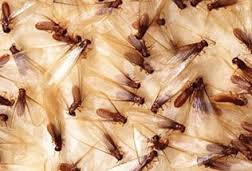
Colonising flights: Termite colonies are formed when the winged reproductive forms leave their original nest and take a colonising flight. These flights occur during warm humid weather and usually take place during spring and autumn. The right combination of climatic conditions increases the chances of success in founding a new colony. Starting a colony: Once a suitable site is found, the mating pair ( the new king and queen ) drop their wings, hollow out a small mating chamber, and the queen begins to lay a small number of eggs. Both the king and queen care for the young at this early stage. As the colony grows, the different castes take on their roles of workers and soldiers, leaving the queen to produce more and more eggs. She will produce 10/20 eggs in the early stages of a colony and may go on to lay over 1000 eggs a day after several years
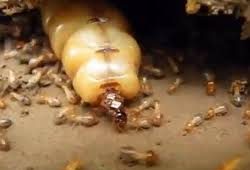
Termites have several castes that have definite tasks within the colony; Queen/s: there is usually one main (first-form) queen who may been the original founder of the colony. She may be larger than other colony members and swollen with eggs. Queens can live and reproduce for a long time ( up to 20 years in some species ). There may also be several supplementary queens in a colony, which can take over egg production from the primary queen when she dies.
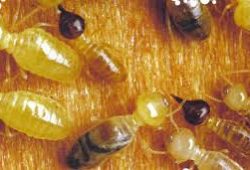
Workers with white-bodies and thin skin, these are the most numerous in the colony and are involved in food gathering, feeding and tending the young and queen, and building or maintaining the nest. They rarely emerge from the nest or associated tunnels, as they dry up easily outside the humid nest environment.
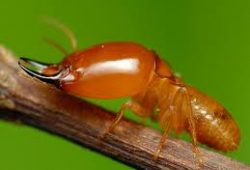
Soldiers: are the colony defenders. They are sometimes larger than workers, but mostly the same size, with darker heads. Two body forms are possible, with a particular species having one or the other: mandibulate ( fully-jawed ) and nasute ( long-nosed ). Some species also have two size classes- major and minor soldiers.
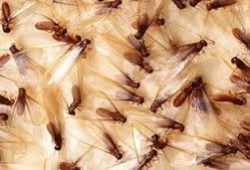
Reproductives – both winged and wingless: these are the future kings and queens. Beginning as wingless nymphs, they develop by shedding their skin through several stages until they are fully winged adults. With darker, more durable bodies and compound eyes, they are able to survive for short periods outside the colony. They are destined to either leave the nest on a colonising flight or take over from the queen if she dies. In some primitive termite species, there is no real worker caste, with the developing young taking on different roles as they moult. They may remain as undifferentiated workers, or moult into either a soldier or a reproductive form.
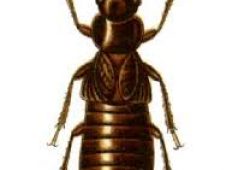
King: the original king fertilises the queen and helps to tend the young during the foundation of the colony.
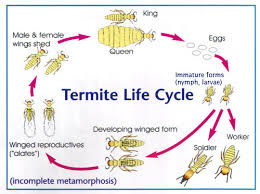
The life cycle of a termite.
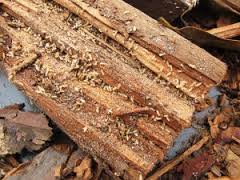
Nest are formed either in trees, in soil mounds or underground. There are 5 main nest types and many species will build more than one type of nest; Ground mounds, Tree nests ( outside tree, connected to internal cavity ), Pole nests ( on human structures such as fence posts and telegraph poles ), Subterranean nest ( underground, in soil stumps and tree bases ), Tree wood ( inside the tree ). Termite colonies are maintained at a high humidity. This protects the thin-skinned workers from drying out. Only when the external humidity is close to 100% can workers leave the nest to forage. This is especially the case for subterranean termite species, which gain most of their water from the soil. These species can only become pests in buildings where a constant water source is available. Indoor plants on pavers are a major cause, as are leaking pipes or roofs. Termites that nest in dry wood don’t have such strong water requirements and may attack wooden structures that are not necessarily very damp. Nest are usually maintained at a temperature between 25C -36C. This varies, depending on the species, the external temperature and the health of the colony. Healthy colonies are able to maintain this range during very hot and very cold external conditions.
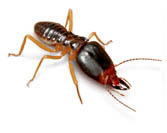
Termites are social insects that build large nests in soil or wood and can occasionally cause damage to wooden structures. They are sometimes called ‘white ants’, however they belong to a completely different insect group ( Order Isoptera) to true ants ( Order Hymenoptera). Termites have pale brown to white bodies with a darker head and have no waist between the thorax and abdomen. The antennae have bead-like segments. The non reproductive forms never develop wings, are blind, and have thin skin that makes them vulnerable to drying out. Reproductive forms have two pairs of equal-sized wings, one pair of compound eyes and a thicker skin that protects them better from drying out when exposed.
